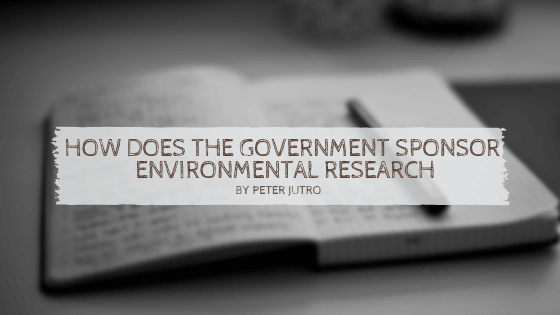From energy-swallowing, toxin-spewing technology to waste at sea, to the habitat transformation created by the creeping growth of developed areas, it’s no secret that there are aspects of contemporary life that pose a significant threat to the environment. Research is constantly underway to develop new methods of damage control, as well as sustainable alternatives to problematic human activities. A portion of that research is funded by the U.S. government, often through various organizations and initiatives dedicated to improving how we interact with nature.
In addition to research conducted by EPA at its own laboratories, each year, the Agency awards over $4 billion–around half of its budget–in grants and other funding measures to nonprofit groups, colleges and universities, state agencies, and more. EPA offers a wide range of grant programs for which organizations can apply, including fund matching for anti-pollution initiatives and research fellowships for students, as well as grants for projects focused on improving air quality, developing sustainable transportation, combating climate change, and greening waste disposal, among other goals.
One EPA program of note is the People, Prosperity and the Planet (P3) award competition, in which teams of college students are given $15,000 grants to develop projects focused on overcoming environmental challenges. The money goes toward designing and testing a proof of concept that each team displays at the EPA’s National Sustainable Design Expo. The winners of the competition earn a second, $75,000 grant to apply their project in a real-world setting.
Winning projects have included the SolSource 3-In-1–a solar-powered device that functions as a cooker, heater and electricity generator–created by students from Harvard, Wellesley, MIT, and Qinghai Normal University. The device was tested among poor Himalayan communities, and was found to reduce indoor pollution, increase household income, and provide a clean power source.
Additional funding opportunities are offered by dozens of government agencies. Grant and award programs are offered through the the National Science Foundation, an organization created in the 1950s under President Harry Truman. This year, NSF requested $6.6 billion from Congress, which is intended to support 8,000 new research grants nationwide. In addition, the US Department of Energy (DOE) currently funds, through its Clean Cities Coalition Network, programs to create and use sustainable fuel sources, improve fuel efficiency, and limit harmful emissions. Since 1993, the DOE has provided $400 million in support of almost 600 Clean Cities projects.
Federal grants are also offered by the National Institute of Environmental Health Science (NIEHS), a National Institute of Health center. NIEHS investigates links between environmental factors and disease. Applicants can apply for a list of financing opportunities in which the NIEHS participates. Potential opportunities sponsored by the NIEHS include university research grants, small business awards, research center funding, and awards for training and career development.
These are but a few examples of government departments and agencies that have historically been supportive of a cleaner, healthier environment. Nevertheless, it’s worth noting that the US Government, although a very significant actor, is far from alone in these efforts. Foundations, corporations, International organizations, and many other countries support environmental research, and historically, the US government has long helped support those both to generate new knowledge, and to develop new generations of environmental scientists at home, and through international organizations, to help encourage similar activities across the globe.

